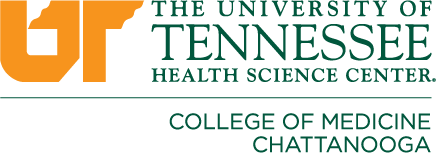Program Goals and Objectives
Plastic and Reconstructive Surgery (Advanced Residency)
General Program Goals and Objectives
The program goals and objectives are distributed to faculty and residents at the Department
of Plastic Surgery orientation each July. Residents are required to review their assigned
rotation goals and objectives prior to each rotation change.
All rotation goals and objectives include General Competencies and the medicolegal and psychiatric aspects of Plastic Surgery.
The overall goals and objectives are:
- To provide residents with quality instruction and experience in a wide range of plastic surgery areas, including both the functional and aesthetic management of congenital and acquired defects of the face, neck, trunk, body, and extremities.
- To produce residents who are well trained in the broad areas of general plastic and reconstructive surgery.
- To produce residents who exhibit continued competent skills and characteristics in the six general competencies of patient care, medical knowledge, practice based learning and improvement, interpersonal and communication skills, professionalism and systems based practice.
- To produce residents who identify and practice the medicolegal and psychiatric aspects of plastic surgery practice.
The competency based goals and objectives are outlined for each rotation over a three‐year period. Upon reaching the second and third year rotations the senior (chief) residents have increased responsibility and authority in patient and operative care, as well as supervisory responsibility for junior residents, clinical and specific milestones to be reached are outlined for each year demonstrating progressive responsibilities toward the third and final year.
Specific training is provided in:
- Congenital defects of the head and neck, including clefts of the lip and palate, auricular deformities, and craniofacial surgery.
- Neoplasms of the head and neck, including the oropharynx and training in appropriate endoscopy.
- Craniomaxillofacial trauma, including fractures.
- Aesthetic (cosmetic) surgery of the head and neck, trunk, and extremities.
- Plastic surgery of the breast.
- Surgery of the hand and upper extremity.
- Plastic surgery of the lower extremities.
- Plastic surgery of the congenital and acquired defects of the trunk and genitalia.
- Burn management, acute and reconstructive.
- Microsurgical techniques applicable to plastic surgery.
- Reconstruction by tissue transfer, including flaps and grafts.
- Surgery of benign and malignant lesions of the skin and soft tissues.
Residents gain experience in:
- Surgical design
- Surgical diagnosis
- Surgical and artistic anatomy
- Surgical physiology and pharmacology
- Wound healing
- Surgical pathology and microbiology
- Adjunctive oncological therapy
- Biomechanics
- Rehabilitation
- Surgical instrumentation
Residents completing the program must display judgment and technical capability for achieving satisfactory surgical results.
Instruction in the basic sciences is provided as an integrated part of the clinical training. Formal conferences and lectures enable discussion to broaden the resident’s knowledge in basic sciences (anatomy, pathology, physiology, embryology, radiation biology, genetics, microbiology, and pharmacy) and surgical principles fundamental to clinical plastic surgery. These didactic sessions and discussions allow time for evaluation of current medical literature and studies. Each faculty member is assigned didactic lectures in their area of expertise. In addition, attending physicians provide a great deal of one-on-one teaching regarding specific cases and problems encountered during ongoing patient care. Residents participate in the presentation of educational material at the conferences.
Residents are not encouraged to emphasize a particular area of plastic and reconstructive surgery during the 3-year program; e.g. hand, head and neck, aesthetic, microvascular, or craniofacial surgery. However, if residents develop a specialized interest during their training, they are encouraged to seek a fellowship at another institution or remain with our program for an additional year to develop further expertise in that specialized area.
During each rotation the resident gains a clear understanding of medicolegal and psychiatric aspects of plastic surgery practice. Residents regularly obtain informed consent from the patient and complete an effective basic psychological evaluation when appropriate.
During training each resident demonstrates the following:
- Obtains informed consent from all patients and effectively documents the consent agreement.
- Evaluates patients for aesthetic surgery from a physical and psychological perspective.
Upon completion of training, the resident demonstrates competence as follows:
- Identifies the medical and legal perspectives of the contractual agreement between physician and patients.
- Identifies the concepts of informed consent and implied guarantee.
- Identifies the role of the medical record as a legal document.
- Identifies the impact physical deformity can have on patients and their families.
- Recognizes and implements techniques to explore the motivations of patients seeking cosmetic surgery and how to distinguish acceptable, unacceptable, and pathological motivations.
All residents upon entering our program are board eligible in general surgery or have both dental and medical degrees and are fully trained (board eligible) in Oral and Maxillofacial Surgery, as well as additional training in general surgery. As a result, our residents have frequently had 5 to 7 years of surgical training prior to beginning our residency program. This also means that each resident has met the necessary requirements and general competencies to successfully complete a surgical residency training prior to the start of our specialized training program.
It is the goal and objective of our training program to produce clinically and professionally competent independent surgeons in Plastic Surgery. Competency in the following six general areas is assessed on each rotation by the faculty member(s) to whom the resident is assigned.
- Patient Care: Compassionate, appropriate, effective management of responsibilities and promotion of health. Gathers essential and accurate information. Performs all essential skills. Works effectively with patients, families, and other professionals.
- Medical Knowledge: Demonstrates investigative and analytical thinking in problem solving. Knows and applies basic and clinical sciences.
- Practice-Based Learning and Improvement: Analyzes practice experience. Locates evidence from scientific studies. Uses information technology. Understands study design and statistical methods. Teaches others.
- Interpersonal and Communication Skills: Maintains ethically sound relationships and communicates effectively with patient, family, and other members of the healthcare team.
- Professionalism: Demonstrates respect, integrity, and responsiveness that supersedes self-interest. Has a commitment to excellence and professional development and high ethical standards of confidentiality and sensitivity to patients regardless of culture, age, gender or disabilities.
- Systems-Based Practice: Demonstrates awareness of larger context of healthcare. Practices cost-effective care and resource allocation. Assists patients in dealing with system complexities. Partners with managers to coordinate and improve healthcare and system performance.
The close daily working relationship with a faculty member allows direct observation and interaction by the faculty with the resident in the clinics, office, conferences, and operating room, providing an excellent way to assess the general competencies and the accomplishment of all goals and objectives.
The program has a detailed goals and objective systems of rotations that are competency based. Close supervision of residents by faculty using multiple assessment tools documents yearly progression toward milestones and ultimate obtainment of goals. Completion of this process documents competency of the resident to independently practice plastic surgery.
Plastic Surgery Milestones
The Plastic Surgery Milestones listed by the ACGME have been incorporated into our curriculum.
Rotation Goals and Objectives
Craniomaxillofacial, Cleft Lip and Palate, Facial Fractures, and Aesthetic
- Craniomaxillofacial Surgery – Congenital Disorders
- Craniomaxillofacial Surgery – Trauma
- Benign and Malignant Skin Lesions and Dermatology
- Oral Maxillofacial Surgery
- Oculoplastic Surgery
- Burn Management
- Anesthesia
- Head and Neck – Benign and Malignant Tumors/Reconstruction
- Aesthetic Plastic Surgery of the Head and Neck
- Aesthetic Plastic Surgery of the Breast
- Plastic Surgery of the Breast – Tumors and Reconstruction
- Aesthetic Plastic Surgery of the Trunk and Extremities
- Aesthetic Injectables
Plastic Surgery of the Hand and Upper Extremity
- Upper Extremity ‐Anatomy/Physiology/Embryology
- Upper Extremity ‐Congenital Disorders
- Upper Extremity ‐Benign and Malignant Tumors
- Upper Extremity ‐Trauma
- Upper Extremity ‐Functional Problems of the Upper Extremity
- Upper Extremity – Reconstruction
Aesthetic and Breast Reconstruction
- Aesthetic Plastic Surgery of the Breast
- Plastic Surgery of the Breast – Tumors and Reconstruction
- Aesthetic Plastic Surgery of the Head and Neck
- Aesthetic Plastic Surgery of the Trunk and Extremities
- Aesthetic Injectables
- Advertising
- Microsurgery
- Plastic Surgery of the Lower Extremities
- Head and Neck – Benign and Malignant Tumors/Reconstruction
- Plastic Surgery of the Trunk – Trauma and Reconstruction
- Benign and Malignant Skin Lesions and Dermatology
General Plastic, Reconstructive and Microsurgery
- Burn Management
- Microsurgery
- Surgery of the Lower Extremity
- Plastic Surgery of the Trunk and Extremities
- Plastic Surgery of the Trunk – Trauma and Reconstruction
- Benign and Malignant Skin Lesions and Dermatology
General Plastic, Reconstructive and Dermatology
- Burn Management
- Microsurgery
- Plastic Surgery of the Lower Extremity
- Aesthetic Plastic Surgery of the Trunk and Extremities
- Plastic Surgery of the Trunk – Trauma and Reconstruction
- Benign and Malignant Skin Lesions and Dermatology
Aesthetic / Cosmetic Plastic Surgery
- Organizational Overview
- Aesthetic / Cosmetic Plastic Surgery of the Head and Neck
- Aesthetic / Cosmetic Plastic Surgery of the Breast
- Aesthetic / Cosmetic Plastic Surgery of the Trunk and Extremities
- Aesthetic / Cosmetic Plastic Surgery - Injectables
- Aesthetic / Cosmetic Plastic Surgery - Advertising and Social Media


